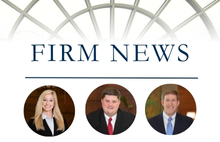Trending: The WELL Building Standard: A Worker Focused Performance Based Rating System
September 2018Over the past 20 years, state and local governments, real estate developers, corporations and tenants have all, to varying degrees, jumped on the “green” building bandwagon. Much credit needs to be given to the U.S. Green Building Council and its LEED (Leadership in Energy and Environmental Design) rating system for promoting sustainable and environmentally friendly development. “Green” buildings have proven not only good for the environment, but good for communities and businesses. The best “green” buildings often enjoy a rent premium and are sited to enhance the livability of the communities in which they are located.
The original focus of the “green” building movement, as represented by LEED, prioritized reducing greenhouse gas pollution generated by buildings. “Green” building success was achieved by architects and engineers developing and using energy efficient building systems and materials and addressing site location issues that impacted waste removal, water runoff and transportation alternatives to the car. A secondary focus was on the health of the building’s workers. Points were available for bike rooms, on-site workout facilities and the amount of natural light that penetrated a building. But this focus on the health of the building’s workers remained secondary to the energy efficiency/greenhouse gas reduction primary focus.
The WELL Building Standard, created by the International WELL Building Institute, is a relatively new building rating system that promotes work environments that enhance worker health and productivity. WELL requires periodic testing of the air, water, light, thermal comfort and sound levels in a building to determine compliance with measurable standards and tolerance levels developed by professional consultants. As such, WELL is a rating system that is complimentary to LEED, and not in place of LEED. For example, while LEED focuses on the energy efficiency of a building’s HVAC system, WELL focuses on the comfort level at each work station. WELL is concerned with temperature variations, air flow and air humidity. All of these impact the performance and productivity of employees.
WELL measures air particles and water purity for health safety issues. In Beijing, China, sophisticated air filtration systems are an essential component of best practice building design and are necessary to provide clean air in a pollution challenged city. Closer to home, water infrastructure issues have made clean water an issue that is getting more attention. WELL also looks at light differently than LEED. Whereas LEED gives points for natural light in the overall building, WELL focuses on light, including task lighting, at the work station level.
With many companies moving to open work spaces, workplace noise has increasingly become an issue. There is noise from building systems, such as elevators and HVAC equipment, but there is also noise from office computers, copiers and other office equipment, and fellow workers. In fact, addressing the noise issues generated from fellow workers has become a real challenge. WELL provides guidance on steps that can be taken to reduce the impact of noise on employee productivity.
WELL also promotes employee health. Having an on-site exercise facility is great, but WELL digs deeper and tracks data on utilization and employer promotion of exercise and healthy eating. WELL evaluates whether the work environment promotes movement within the office and at the work station through ergonomically designed furniture. Proximity of healthy food options for lunch and breaks is also important.
As with LEED, it will take some time for the WELL Building Standard to be broadly implemented and many may choose not to go to the expense of being certified. However, just as elements of LEED are now commonplace in buildings and considered best practices, over time elements of WELL will become commonplace and best practices.








